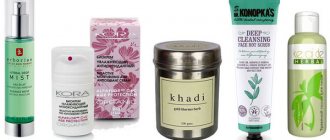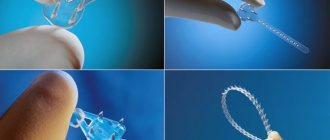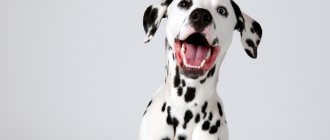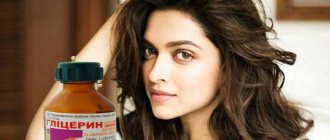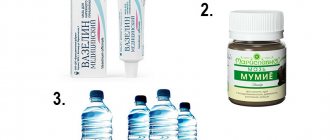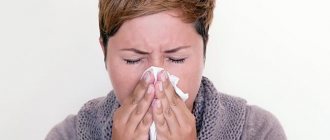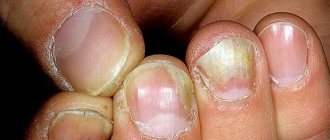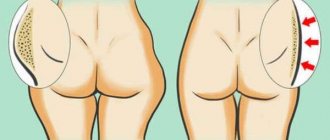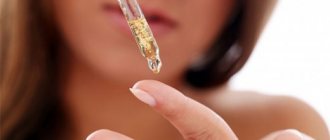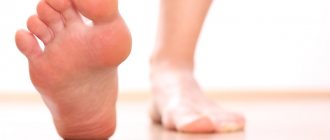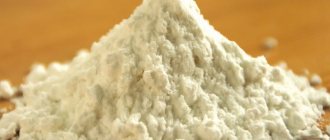What recipes do you know for facial rejuvenation? “approaching…” we begin to understand that such recipes for rejuvenating facial skin do not rejuvenate at all. They maintain skin tone - nourish, moisturize and protect its uppermost layer, the epidermis. Yes Yes. Even very good and regular skin care is superficial and, alas, cannot delay aging. “Stubborn” nasolabial folds and ptosis of the zygomatic region become especially problematic for women.
In this material we will raise the question of whether facial rejuvenation is possible without surgery.
Laser skin rejuvenation.
Surgical facelift - operative
SMAS suturing during surgical lifting
Includes classic circular lifting and shortened options - when individual small areas are tightened: short-scar lifting, S-lift, MAKS-lift, etc. Technically, there are a lot of varieties and they can differ greatly, but this is always an operation, and it is performed by a surgeon in the operating room.
- Access - incision and tissue separation - the skin is separated from the SMAS, from the subcutaneous muscle of the neck, etc. A huge plus in this is that the surgeon can see what and how he is doing. Disadvantages: risk and long, sometimes difficult rehabilitation.
- The surgeon stretches the tissue and secures it in a taut position.
The meaning of SMAS lifting Often the layers are pulled with different forces and sometimes even in different directions - SMAS separately, platysma separately, skin separately, etc. Plus - you can tighten it properly, and you can do it in deeper layers more reliably, better and usually for a long time - for years. The downside is that the tissues are again left without support in the future. If their own strength is insufficient, they will stretch again. Sometimes it's offensively fast. - The excess is often cut off, sometimes sutured with an overlap. A huge plus for which you are willing to take risks and endure - you can remove even large excesses of skin that have nowhere else to go. Of course, the more we cut off, the more difficult it is to maintain the naturalness of the face. You have to choose - more forced or more natural.
- The fixation is as reliable as possible. We sew it with a regular surgical suture to the periosteum or to a strong ligament. The main advantage is that the surgeon SEES what and how he attaches it. He can assess the reliability of the fastening - directly tug with tweezers to see if it is securely sewn. Choose what thread and what seam to sew everything with. If the seam seems weak, hem it again. Yes, sometimes the ligaments themselves don’t hold. But if it is not possible to securely fasten it during the operation, then most likely it will not work.
- Rehabilitation. Many patients have no idea what they then have to go through. If anyone is interested in details, google it on the forums, there are many stories.
1) risks - how many nerves you have to go through, 2) rehabilitation - it all has to grow back together.
Often the outside of the scar is very small, but inside all the stratified tissues have to grow together again. It can be very difficult. It doesn't happen very well. But in any case, rehabilitation is serious. Dressings, bandages, regime restrictions. - The risks are maximum. General anesthesia is often needed. The biggest contraindications. Therefore, surgeons very carefully weigh whether the possible result is worth the risk. Of course, different types of surgical lifting may differ significantly in risks, but in any case, an operation is an operation...
- The changes are most often irreversible - what was cut off is gone (otherwise why would we need a surgeon
 ? But in addition, the tissues in the zone of dissection change forever - an internal scar is formed.
? But in addition, the tissues in the zone of dissection change forever - an internal scar is formed.
On the one hand, this is good - scar tissue is denser than weakened aging skin. This helps keep the fabric from sagging later. But if it does sag and you want to do surgical lifting again, it will be more difficult to do. The risks increase, and it’s more difficult to pull it up nicely.
Well, an external scar is a mandatory attribute.
Its visibility directly depends on the location and extent of the skin incision. Therefore, surgeons try to make do with a smaller incision. If possible, endoscopic or short scar lifting is used. But the smaller the incision, the less opportunity to tighten the tissue, so you have to choose - a more noticeable scar or a larger tightening...
Questions and answers about the procedure
Ask a question All questions and answers
Question dated 02/26/2018 / Olga How does a non-surgical facelift occur?
Hello Olga! Thermage procedures are performed on the forehead and upper eyelids, Ultrasonic SMAS lifting (Ulthera System) on the lower part of the face, and Bioplasty in the middle third of the face.
Sincerely, Natalia Imaeva
Question from 10/17/2016 / Elena Borisovna
I am 59 years old. I had surgical blepharoplasty and a circular lift 5 years ago. The effect ends. New operations are not possible due to complications with general anesthesia. What is possible now for facial rejuvenation without complete anesthesia with the longest possible effect? Sincerely, Elena Borisovna
Hello, Elena Borisovna!
To achieve the lifting effect, it is possible to carry out hardware techniques (Thermage, Ulthera, RECYTOS-Skin), thread lifting techniques (Light Lift, UPiFL-SuperLift, Resorblift). To achieve the maximum lifting effect, a combination of hardware and thread techniques is possible. It is possible to choose the procedure that is most effective for you during a personal consultation with a specialist.
Best regards, Ilmira Petrova
Question from 04/05/2014 / hope
How long does this procedure last?
Hello, Nadezhda! The effect lasts for 3-5 years. You can learn more about this procedure, as well as alternative correction methods, at a personal consultation with a specialist; consultations at the clinic are free. Sincerely, Natalia Imaeva
Question from 02/10/2013 / Oksana 40 years old
Hello! Tell me, is it possible to use laser procedures if Radiesse was used as a filler? The drug “stands” in the cheekbones and nasolabial folds. The “jowls” in the lower part of the face are disturbing, and therefore the oval of the face is unclear
Hello, Oksana!
The presence of a filler is not a contraindication for the Ulthera System procedure.
Sincerely,
Natalia Imaeva
Facelift with threads - cosmetic
Threads from different manufacturers differ in both materials and design. We did a general overview here. What they have in common is that they can be installed by a cosmetologist in a treatment room (although advanced surgeons do not refuse to install either).
- Access - skin puncture. There is no need for an operating room; everything is done in the treatment room. There is no incision - no stitches - no scars to hide or worry about how they will look. Minus - the doctor works by touch, i.e. a little at random. Of course, knowledge of anatomy helps. But knowing what should be here and seeing it with your own eyes, like during an operation, are two very different things. After all, all faces are different.
- Tension along the entire length of the thread - by hooking the fabric with notches, spikes, cones or other special hooks on the threads.
Plus, the threads take on part of the gravitational load from the fabrics along their entire length. And not just at the suture site, as during surgery. This greatly helps the tissues not to stretch in the future if their strength is critically reduced. - Extra tissues are redistributed upward or sideways and backwards. The middle third of the face is raised to the zygomatic arch, the lower third is pulled up to the ear or under the earlobe. This is an important point. Large excess skin Beautiful You won’t be able to move it - folds will form. Therefore, if you want to avoid surgery, you don’t need to wait too long. When the skin stretches, you will have no alternative but to cut.
Threads help well when the skin has begun to sag, but has not yet stretched much.
- Fixation of two types. Light - with the upper part of the thread behind the fabrics lying outside the stretched area. More reliable - behind the ligaments or periosteum. It is only possible with certain types of threads (Aptos, Spring Thread) and not in all areas of the face. In any case, the doctor does this blindly. He does not see the tissue under the skin, he cannot assess the strength of the ligaments to which he clings, as a surgeon does during an operation. Sometimes the hook turns out to be of very high quality, sometimes not so much. But this is almost always some kind of lottery.
- Rehabilitation - relatively light.
Immediately after placing Aptos
, there is no wound, no tissue detachment - only a puncture of the skin. There is nothing special to live for. In the first days, the threads may cause some anxiety - tingling, a feeling of tension. But this cannot be compared with postoperative rehabilitation. Most patients calmly return to work within a few days. But easy rehabilitation does not mean simple. In the first month after the procedure, the fixation of tissues with threads is not very reliable, and if you pull the cheek too hard, you can pull the tissues off the hooks. Nothing bad will happen, but we will lose the effect. Therefore, in the first month you have to limit yourself in sports, gardening, etc. Do not sleep face down or sleep with an elastic bandage. After the operation, there is also a restrictive regime, but there the face is such that, willy-nilly, you treat it with care. And after threads, they often begin to forget about the regime after a couple of weeks, reducing the effect of lifting. Read more about rehabilitation after threads here >> - The risks are minimal, temporary aesthetic complications (folds, irregularities, asymmetry) either go away on their own in a couple of weeks or are easily corrected by the doctor. There are contraindications, but the list is much shorter than for operations. General anesthesia is not needed.
- There are no irreversible tissue changes. If you don’t like something or it doesn’t work out, or the effect wears off, you can always use other threads, or try surgery or hardware lifting. As a rule, you don’t even need to remove the threads for this, but if you still need it for some reason, they are simply removed. There are no cuts, no scars.
Where can I undergo the Ulthera therapy procedure?
are experienced doctors and tens of thousands of satisfied patients since 1994. Over the years, we have gained enormous experience and are constantly improving our skills, offering patients only the most effective solutions in the field of cosmetology.
You can get a doctor’s consultation and undergo the procedure at the center on Marksistskaya, having previously made an appointment by phone
+7
Mon-Fri: 9:00-20:00, Sat: 9:00-18:00
The initial consultation with a cosmetologist on Altera Therapy is FREE if the procedure is carried out on the day of the consultation.
Sign up for a consultation
Thread facelift - surgical
It is similar to the previous method, but to fix the lifting, a skin incision is made, in the depth of which the surgeon attaches the lifting threads in the usual surgical way - by suturing them to the periosteum, for example. The pros and cons are intermediate between surgical lifting and cosmetic thread lifting. There is an external seam, but it is small (1-2 cm) and is “hidden” behind the ear or behind the hairline in the temporal area. It is almost impossible to notice it after a few months.
There is no deep tissue dissection, so the risks are much lower than with surgery.
No anesthesia is needed, everything is done under local anesthesia.
Rehabilitation is easier than with surgery and simpler than with classic thread lifting, because... the threads are secured more securely. The method is good when you need to lift “heavy” tissues. For example, with a chin lift.
Chin lift with Aptos threads
Both surgical and thread lifts use threads from the same suture materials, but use them differently. In surgical sutures, tissues are sutured with a regular suture to the periosteum or to the ligament. With threading, the tissues are hooked and lifted by threads.
Hardware face lift
The description of the effect of most cosmetology devices includes the word “lifting”. Unfortunately, only a small part of them can provide facial skin tightening. These are radio wave (RF lifting), laser and ultrasound tightening. Ultrasound is a directed ultrasonic “gun”; it has nothing to do with ultrasonic facial cleansing or cavitation.
EVERYTHING else is microcurrents, myostimulators, etc. — they don’t provide . (For some reason people often ask about leeches - alas, too)
- Access is from outside. There is no wound or puncture. No need to worry about sterility.
- The effect is not immediately clear. Around this moment, marketers create a lot of fog, write a lot of beautiful words, from which it is difficult even for a doctor to understand HOW IT WORKS. Some devices (lasers and RF lifting) focus the effect on the skin, others (ultrasonic Altera or needle RF) - on deeper layers. But they have something in common. Tissue contraction occurs through damage to these tissues. That is, the device must “fry” the skin or SMAS so that they “shrink” a little. There is nothing terrible about this, because the damage is dosed. The main thing is not to overdo it so that the body can cope with the damage. But it’s also important to not “shoot” too lightly - so that the tissues are “cooked” a little, otherwise we won’t see the effect. Good devices cost millions because everything is checked properly and it is more difficult for a doctor to make a mistake with the power.
- Excess skin shrinks. It is impossible to somehow adjust and predict the degree of tension in a particular patient - it all depends on the reaction of his tissues.
- The fixation is weak - either due to skin tension or the formation of scar tissue in the deeper layers, which “grabs” the skin.
- Rehabilitation is easy. Some inflammatory phenomena - mild soreness, swelling, redness - may persist for several days. Or maybe they won’t exist at all. The greater the damaging effect, the greater the chances of a good tightening, but the more pronounced the tissue reaction. In any case, compared to the operation - nonsense.
- risks , but they are minimal. It is necessary to strictly fulfill the requirements for selecting patients and follow the protocol of the procedure, then the chances of getting an unexpected reaction are small. There are contraindications, but not such a long list. Therefore, it is a good option if you need to tighten your face, but they won’t take you for surgery or even threads. General anesthesia is not used, because The procedure is believed to be easy. But the stronger the damaging effect, the more painful , and local anesthesia sometimes does not work well.
- Tissues change , in many cases irreversibly. More or less delicate scar tissue forms inside, which prevents anything drastic from being done in the future. Many surgeons do not want to operate after such effects; the tissue threads do not always stretch well... But the need for a new lift still arises after some time - the fixation is far from surgical. There are no external scars.
Result and rehabilitation
The first hours after laser face lifting, the patient may experience a slight burning sensation in the area affected by the laser. Redness and mild swelling may persist for one to two days. To minimize sensations, during this period it is recommended to use ointments or creams that contain Dexpanthenol. These could be drugs such as D-Panthenol or Bepanten.
After the reaction to the procedure stops, cosmetics (creams) containing hylauric acid should be used for skin care. You need to be very careful when under the sun, because after the facelift, metabolic processes in the skin are activated, and it is very sensitive to the effects of ultraviolet radiation. To protect against ultraviolet radiation, experts recommend using sprays and creams with a UF factor of at least 30.
As for water procedures, you can take a non-hot shower or wash your face directly on the day of the manipulations, but it is better to wait with baths, saunas and swimming pools.
Foundation can be used one day after the procedure. In general, rehabilitation after laser rejuvenation can take from one to two weeks. The final period depends on what type of impact was used and how complex the defect was corrected.
On this topic
- Lifting
Fractional RF lifting
- Olga Aleksandrovna Kalinina
- September 17, 2020
Laser facelift results are usually as follows:
- the oval of the face acquires a clearer contour;
- skin tightens
- the elasticity increases ;
- density increases ;
- wrinkles become less deep;
- the vascular network is eliminated;
- pigmentation disappears
- are smoothed out ;
- pores narrow .
In order for the results of the laser to last as long as possible, you should fully adhere to the recommendations given by the specialist who performed the lift.
Brief summary of types of lifting
| surgery | threads | devices | |
| efficiency | +++ | ++ | + |
| safety | + | +++ | +++ |
| rehabilitation | + | ++ | +++ |
| tissue preservation | ++ | +++ | + |
Everything described is about real lifts, when there is enough excess skin. But often the small sagging facial tissues that people come to us with do not require such serious interventions. They can be eliminated much easier and cheaper. You can read about it here>>
Lasers: effective facial rejuvenation without surgery
Modern laser rejuvenation of the face and neck has different means in its arsenal. Laser for facial rejuvenation has achieved an impeccable reputation by two methods.
1) non-traumatic three-dimensional fractional facial rejuvenation with neodymium laser XP-2 Focus with the effect of CO2 laser peeling . The essence of the procedure is that a beam of laser beams (each measured in microns) stimulates super-powerful skin tightening processes .
2) fractional laser photothermolysis Asclepion, Germany – CO2-sparing grinding. Such hardware techniques for facial rejuvenation with a short rehabilitation period are ideal for radical skin renewal and getting rid of defects (pigmentation, enlarged pores, wrinkles).
Correction of facial expressions in the scar area with Botox after removal of myolipoma. Performed by surgeon: Gladysheva Vladislava.
Botox injections. Performed by dermatocosmetologist Elena Vlasova .
Botox injections. Completed by Elena Vlasova.
 ? But in addition, the tissues in the zone of dissection change forever - an internal scar is formed.
? But in addition, the tissues in the zone of dissection change forever - an internal scar is formed.